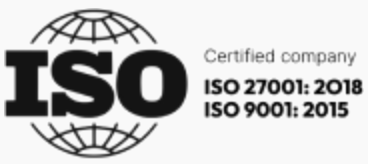As business operations become automated and increasingly complex in this digital age, application development has emerged as a necessity to effectively manage processes and workflows.
Although there is no shortage of pre-made applications on offer, they are often not tailored toward an organization’s particular needs.
In order to achieve optimal results, the use of multiple tools and tech stacks is required.
This is why many businesses have turned their attention towards custom app development as a means of creating software with specialized functionality that meets their unique requirements.
Specifically designed for a single client or organization, bespoke or customized apps are created to meet the individualized needs, requirements, and preferences of their users.
A tech stack can include web frameworks, programming languages, database technologies, application servers, and more.
The most common technology stacks are web-based and include:
• LAMP (Linux, Apache, MySQL, and PHP)
• MEAN (MongoDB, Express.js, Angular.js)
• AWS
• . NODE.js
• .NET
These applications are typically developed from the ground up, from Java and C# to Python and frameworks such as React, Angular, Vue.js, and .Net Core.
Not intended for public access, these tailored products can further streamline business processes, analyze data and provide customer relationship management solutions.
Custom application development is a complex and costly process.
It involves a lot of planning and a large investment of both money and time.
The custom application development costs depend on many factors, including the technology stack and the complexity of the project.
Choosing the right tech stack for custom app development is a critical decision that can greatly impact the success of the project.
A well-chosen tech stack can ensure that the app is scalable, efficient, and easy to maintain. It can also improve the user experience, reduce development time, and lower costs.
On the other hand, choosing the wrong tech stack can lead to a host of issues such as poor performance, security vulnerabilities, and difficulties with integration.
Therefore, the most important first step is to carefully evaluate the requirements of the project and choose a tech stack that is the best fit for those requirements.
In this article, we’ll explore the cost to create apps and how much custom application development costs for different technology stacks.
We’ll also look at some of the most common tech stacks, mobile development costs, the average cost to create an app, the cost of IOS app development, and of course the cost of Android app development. Let’s go!
Factors Affecting Custom Application Development Costs
Custom application development is a great way to get tailor-made software that exactly meets your business needs. However, the cost to create apps can vary depending on a few factors.
Some of the most important factors that affect custom application development costs include the complexity of the project, the number of features required, the number of integrations needed, the size of the development team, the required technical expertise, the development platform, and the timeline for delivery.
Some other factors can include tech stack, region, type of app developed (some might require special compliance or AI experts), amount of devs needed, and costs for dev hour.
It is also important to consider any additional costs for maintenance and support after the completion of the project. Understanding all of these factors before beginning a custom application development project can help ensure that your project stays within budget and is completed efficiently and on time.
Tech Stack
The choice of tech stack can have a significant impact on the custom application development costs.
The availability of developers with the required skill set for the chosen tech stack can affect the cost of development. When selecting a tech stack, it is essential to consider how much it might cost to hire developers with sufficient skill sets.
If you are at the MVP development stage, check out our article on building an MVP
This figure can be impacted by whether or not these experts are sought after. Additionally, development time must also come into play when making this choice; some tech stacks may require more specialized, complex coding leading to longer timelines for completion.
Cost-related considerations should not be overlooked when developing a custom application. Licensing fees for specific technologies or frameworks may add to the total cost, so that is something worth thinking about. Additionally, when evaluating potential tech stacks, make sure you consider scalability and maintenance costs – some may require greater resources than others to achieve the same results, thus resulting in a greater expense down the line.
Region
When it comes to custom application development, location can have a major impact on cost. There are many reasons why custom application development costs vary between different regions. A notable factor is labor costs; in general, hiring a developer in America or Europe will be more pricey than someone from Asia or South America.
When it comes to taxation, the differences between locales can be substantial. Some governments, for instance, offer concessions or exemptions targeted towards software development firms to reduce their financial burden related to creating and distributing new products.
The strength of certain currencies can have a considerable influence on the cost to create an app. For example, a development team based in a country with a weaker currency will often charge lower rates to customers from countries with stronger currencies.
Regional regulations can have a drastic effect on custom application development costs.
Depending on where you are, certain jurisdictions may impose stricter guidelines which would need more time and resources to meet these standards.
Type of app developed
When it comes to app development costs, there are a few key components that must be taken into account: complexity, features, and platforms.
Generally speaking, an application with more advanced or intricate needs will be costlier than one with basic requirements. In other words, simple apps tend to have lower production costs than complex ones.
When creating an app, complexity can often be linked to features and functionalities. Due to a need for extra expertise, for instance, an AI expert, the development of an app that requires integration with external systems or services will generally require more time and resources.
The platforms for which the app needs to be developed can also affect the cost to create the app.
The cost of developing an app for multiple platforms, such as mobile application development costs, the cost of IOS app development, or the cost of Android app development will require more time and resources than developing an app for a single platform.
Amount of devs needed
It is more than obvious that employing more developers for the project will bring about an increase in expenses.
One must take into account not only their salaries but also their benefits packages, which can vary depending on their level of experience and expertise.
Of course, more individuals required for the job means higher costs overall.
Cost for dev hour
The cost per developer hour is a significant factor that affects the overall cost to create an app. The cost per hour can vary depending on the location, experience level, and expertise of the developers working on the project.
Although experienced developers may cost a bit extra per hour, their expertise often leads to shorter project timeframes. This can offset the higher hourly rate, making them a worthwhile investment for the development of your project.
In comparison, less experienced developers typically have longer completion times and this could increase the overall sum spent on development.
Also, more complex projects may require developers with specialized skills and expertise, which could increase the hourly rate.
Popular Tech Stacks for Custom App Development
For developing robust and scalable applications, many custom app developers utilize popular tech stacks.
One of these is LAMP (Linux, Apache, MySQL, PHP).
This technology stack has been around for a number of years and offers great stability and flexibility for web development.
Alternatively, the MEAN stack (MongoDB, Express.js, Angular.js, and Node.js) consists entirely of JavaScript programming language components to create both server-side and client-side apps. It’s another popular choice among developers building custom applications.
(C#), and React (JavaScript), AWS or NODE.js. Each has its own strengths that can be adjusted to fit the requirements of a custom app development project.
The LAMP stack is a popular open-source technology for users seeking an affordable and user-friendly development solution. However, when it comes to larger and more intricate applications, it may not be the best option since extra manual configuration and upkeep are necessary.
MEAN is a popular open-source stack for creating web applications and mobile application development, which incorporates JavaScript to facilitate the transition from client-side to server-side development.
Despite its advantages, it necessitates that developers have a proficient understanding of JavaScript, and can be difficult due to the limited availability of well-established libraries and tools in comparison to other stacks.
Though it may require a bit more configuration, Django is undeniably robust and secure – allowing you to create large-scale applications with ease
That being said, there is no denying that learning how to use these frameworks presents a bit of a steeper curve than others out there.
Developed by Microsoft, .NET is a robust and dependable framework for crafting applications on an enterprise level. Though the licensing costs may be pricier than other platforms and it may not be as suitable for open-source projects compared to other stacks.
React is a popular JavaScript library that is famed for its high performance, reusable components, and user-friendliness.
Though one needs to grasp the fundamentals of JS well in order to use it effectively, integration with other technologies may be challenging and thus lead to vendor lock-in.
Additionally, it mainly focuses on front-end development and requires back-end technology for full functionality.
Hourly rates by Western Europe, Eastern Europe, and other relevant zones
In comparison with other tech stacks, LAMP can be a cost-effective choice for development due to its open-source nature and moderate hourly rates.
Licensing costs are either low or non-existent, which is beneficial.
However, manual configuration and maintenance need to be done, increasing the time and cost required. Typically, LAMP developers charge between $100 to $250 per hour of work in Western Europe, while in Easter Europe the cost per hour can be between $25 to $75. In other relevant zones, such as Asia and Latin America, LAMP developer rates can be even lower.
| Tech Stack | Western Europe (Hourly Rate) | Eastern Europe (Hourly Rate) | Other Regions (Hourly Rate) |
|---|---|---|---|
| LAMP | $100 – $250 | $25 – $75 | Lower costs |
| Node.js | Not mentioned | Not mentioned | Not mentioned |
| MEAN | $100 – $250 | $25 – $75 | Lower costs |
| Django | $100 – $250 | $25 – $75 | Lower costs |
| .NET | $150 – $300 | $30 – $100 | Lower costs |
| React | $100 – $250 | $25 – $75 | Lower costs |
Using Node.js comes at no cost – not even hidden ones. That is because Node.js is a free and open-source technology, which means there are no licensing or subscription fees that you need to pay for. So when it comes to the development costs of a project, the open-source nature of technology such as the one offered by Node.js makes an attractive option.
MEAN is an open-source technology and, like LAMP, has low or no licensing costs. Although MEAN requires a deep understanding of JavaScript for development, there is a vast range in cost depending on the geographical region. For example, Western Europe charges from $100 to $250 per hour for MEAN developers, while Eastern Europe’s hourly rates range from $25 to $75. Furthermore, other regions like Asia and Latin America often feature even lower prices for MEAN development services.
What makes Django advantageous is balanced out by a steep learning curve, which tends to require more time for development projects—and costs. Across different parts of the world, costs for developers working in these programs can vary considerably: from Western Europe with rates spanning from $100 to $250 per hour; Eastern Europe from $25 to $75; and Asia and Latin America at even lower costs.
Developers utilizing the .NET framework to craft enterprise-level applications benefit from its powerful and secure nature, although this is often balanced out by licensing costs and expensive hourly rates. For example, in Western Europe, one can expect to pay anywhere from $150 to $300 per hour for a .NEt developer, while Eastern Europe-based developers are much cheaper at a range of $30-$100 per hour. Even lower costs can be found in Asia and Latin America.
Hourly rates for React developers in Western Europe are high, ranging from $100 to 4250, while in Eastern Europe, they range from $25 to $75 per hour. Lower costs can be found in Asia or Latin America.
The average cost to create an app can vary depending on various factors such as the app’s complexity, features, design, platform, and location. According to VDC Research, the average cost to create an app is $140,000. According to Clutch, the overall cost of the app might even rise to $500,000 in cases when advanced functionality is implemented.
Cost of IOS app development
While procuring the same services from Asia or Latin America will cost between $5000 and $100.000, developing an iOS app in the US or the UK will cost somewhere between $10.000 and $450.000. The average cost to create an IOS app can be calculated using the following formula: Platform + UI/UX development hours x (Development Time x Developers Hourly Rate).
Cost of Android app development
On average, Android app development costs can range between $15.000 to $500.000.
Why choose Romania for software development services
In recent years, Romania has become a significant hub for software development.
The city of Cluj-Napoca, famously known as ‘Cluj’, is the leading tech center in Romania and has become renowned for its innovative culture and high-quality lifestyle.
This destination boasts one of the highest numbers of startups per capita with 1 out of 11 people employed within the technology sector.
Romania is one of the top countries in the European Union by economic growth in 2022. It is ranked the 10th most popular country in Europe to build a tech startup business. Thanks to high demand and the tech pool’s ability to adapt to new technologies, Romania is now recognized as one of the main hubs for ReactJS, React Native, Flutter and Node development.
Romania ranks 10th globally by the number of certified IT specialists and the average hourly rate for software development in Romania ranges from 45$ to 63$, a much lower rate than in the US (around $92) and Western European countries (e.g $78 in the UK).
Situated in Cluj, RebelDot provides exceptional digital solutions for industry leaders, emphasizing user-centricity and attaining business goals.
Get in touch with us for a free quote!
With a long history in web and mobile design and development, this company has acquired a profound comprehension of customer behavior and tech to assemble digital products that match customer needs while surpassing expectations. For more than ten years they have provided these remarkable services.
Case studies of custom app development projects using different tech stacks
Netflix’ development stack
Some may say that Netflix’s popularity is due to the abundance of content. However, this is only partially true. After all, what use is having highly regarded shows in a location where no one can watch them?
Python, Node.JS, Java, Kotlin, and Swift are just a few of the programming languages used to build the Netflix app. This is done to guarantee Netflix app compatibility on all devices, including browsers, smart TVs, smartphones, and game consoles.
The extensive library component of the stack aims to provide users with the most refined streaming service experience possible. React and the JS UI frameworks are responsible for Netflix’s user-friendly interface.
Spotify’s development stack
All music streaming programs operate in a largely identical manner. Spotify picked the cloud storage option over traditional servers for its millions of tunes, which are subsequently streamed to a user’s device.
But Spotify offers a lot more than that. The capability of music discovery, which is based on sophisticated algorithms of taste and behavior analysis, is essential to the success of the major music streaming service.
Spotify’s technological foundation focuses on three main issues:
• Continuous streaming: several servers at various places
• Data storage: Hub framework, Google Cloud, Docker, Apache Storm, and one’s own cloud-based architecture
• Python-based AI suggestions
Best Practices for Choosing a Tech Stack for Custom Application Development
Overview of the key considerations when choosing a tech stack for custom app development
Best practices for selecting the right tech stack
1. Consider the project requirements
It’s crucial to consider the project requirements and the features the application needs before choosing a tech stack. Just as it is very important to select a tech stack that is in line with the objectives of the project because different tech stacks are better suited for certain applications.
2. Assess your team’s expertise
Selecting a tech stack that complements the skills of your team is crucial. Finishing the project on time and under budget could be challenging if your team lacks familiarity with a certain stack. In this situation, it might be necessary to recruit outside developers or to spend money on training to acquire the required abilities.
3. Consider scalability
It’s crucial to consider the application’s long-term scalability while choosing a tech stack. Choose a stack that can scale with your business because some stacks are more suited to scaling than others.
4. Evaluate the cost
Depending on the technology stack, the size of the team, and the project needs, the cost of developing an application might vary significantly. Take into account the price of each stack as well as any other expenses like infrastructure expenditures or license fees.
Conclusion
Custom app development can be a significant investment for business and choosing the right tech stack is essential to ensure a successful project. The cost to create an app can vary depending on several factors, such as the complexity of the project, the features required, and the location of the development team. It is essential to consider these factors when evaluating the application development costs and choosing a tech stack that aligns with the project’s goals. In this way, you can ensure that the app performs optimally, is easy to maintain, and can scale with your business.
Ultimately, by delivering distinctive features and functionality catered to their particular demands, investing in bespoke app development can provide businesses an advantage over the competition. Businesses may assure a successful bespoke app development project that adds value and promotes business expansion by selecting the appropriate tech stack.
FAQs
How much can it cost to design an app?
According to a report by Clutch, the average cost to create an app ranges from $5000 to $50.000. However, this cost can vary based on the app’s specific requirements and design needs.
Can you create an app for free?
While it’s possible to create a basic app for free using some online app builders or development platforms, creating a fully functional and custom app typically requires investment in time, resources, and expertise.
What makes an app so expensive?
App development is a complex and time-consuming process that requires a skilled team of professionals to bring an idea to life. The cost of developing an app depends on some factors: app complexity, design, development team location, platform, integration with third-party services, maintenance and updates.
















